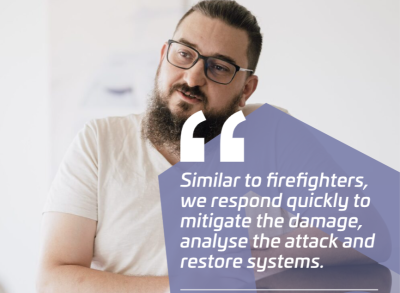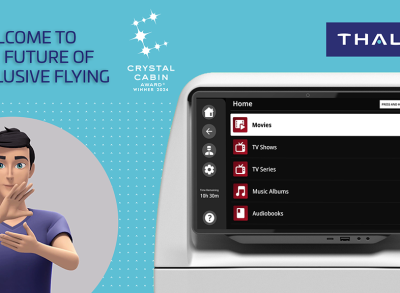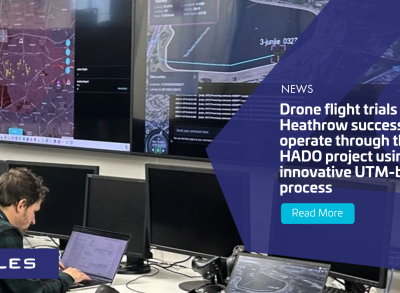5 minutes with... Chris Lee

Could you tell us about yourself, including your academic and professional background, and what sparked your interest in air traffic management and technology innovation?
I started my professional career as an R&D engineer in Makino Asia Pte. Ltd. under a scholarship they offered and was in charge of designing mechanical components for milling machines. Hence, my journey in research and innovation started very early in my career. Since then, I have been in the public service spanning defense, aviation, environment, and IT sectors for over a decade, working on industry development and technology master planning/ adoption. I briefly joined a blockchain startup as their partnership director before joining Thales.
I then worked in ATM with the CAAS, where I was allowed to establish the local ATM ecosystem by setting up a 200 million dollar fund. That really sparked my interest in this domain as I was master planning the research ecosystem for Singapore, which saw me set up the first ATM research institute, ATMRI, in NTU. I was also given the opportunity to travel to Europe to attract like-minded partners, which opened my mind to possible collaborations that we can bridge to enrich the ATM ecosystem.
What motivated you to take on the director role at AIR Lab, and how do you see your background contributing to its success?
When I co-founded the AIR Lab with Herve and Hugh in 2019, we each took on roles that matched our strengths to ensure we could optimize our contributions and help steer it towards success. I took on the role of leading the partnership aspects as I was interested in forging collaborations with external parties to prove the openness of the technologies we are developing in the AIR Lab. As we continue the
various AIR Lab work streams from the first three years, exploring regional collaborations with like-minded partners will be unique for us in the next three years. In this regard, I could again tap into my strength in cooperation to help steer AIR Lab to more regional collaborations.
How does AIR Lab integrate innovation with air traffic management today?
AIR Lab's DNA focuses on integrating open technologies into the ATM CONOPS to enable more possibilities. The open architecture allows us to sandbox new and advanced technologies within a research environment, which would be challenging for a safety-critical system under the past technological stack. Leveraging open technologies, we can quickly explore new use cases with third parties through APIs without spending long hours integrating new capabilities.
AIR Lab has achieved notable success since its inception. What do you attribute this success to, and how do you plan to build on it in the future?
The resources and collaboration we have built with CAAS have pounded the success of AIR Lab in its first three years. Today, the AIR Lab is staffed by more than 50 engineers, developers, architects, and air traffic controllers, who have contributed to defining its success thus far.
The agile, open, and collaborative environment allows for the free flow of ideas and solutions between the developers and ATCOs in shaping and delivering the use cases. This is valuable, and we intend to continue and mirror this environment for regional collaborations.
Could you highlight a project currently underway at AIR Lab?
One of the key projects we are working on is the Regional Experimental Platform, a virtual and distributed platform that provides regional users with common airspace situational awareness on weather and aircraft flight routes.
What are the fundamental principles of innovation in air traffic management, and how do these principles guide the work at AIR Lab?
Innovation could be challenging in a field as complex and technical as ATM, where critical operations are managed. This is primarily due to the safety-critical nature of the operations. I am committed to exploring ways to push the boundaries and apply new technologies within the ATM domain, demonstrating that innovation can thrive even in environments where safety and precision are paramount. We can explore innovation safely and securely without impacting operations.
In the AIR Lab, we explore the application of technologies in steps. First, we explore the benefits and feasibility of applying specific technological applications in ATM through proof of concepts and using open technologies. Then, we explore the use of an open architecture in a safe and secure way.
For those unfamiliar with AIR Lab, could you provide an overview of its mission, key achievements, and how it distinguishes itself in ATM innovation?
The mission of AIR Lab is to advance global aviation efficiency and sustainability by creating innovative ATM solutions through open technologies and collaboration. It is quite a mouthful, but it concisely describes the meaning of our work in a single sentence. We have achieved many things that we can be proud of in the past four years:
- Our foray into green aviation with the CDO Advisory tool
- The tapping of live operational data with the secured data bridge
- The virtualization of the ATM system with the ATM Twin and Open ATM APIs
Moving forward, it is time to integrate our developed capabilities into the wider regional context and create more success on this front for the next three years. At AIR Lab, we have the courage to push the boundaries and explore the possibilities because '100 % des choses qu'on ne tente pas échouent' (100 percent of things we don't try fail).
Want to reach Chris out? Contact him on Linkedin




